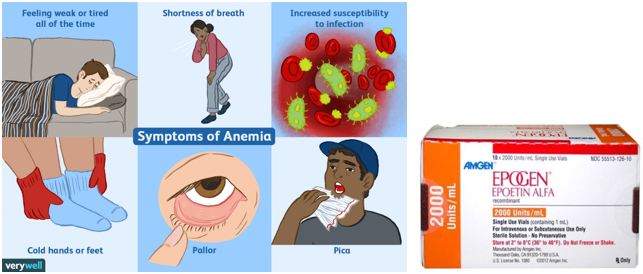A client who receives multiple antihypertensive multiple medications experiences syncope due to a drop in blood pressure to 70/40 mm Hg. Which is the rationale for the nurse’s decision to hold the client’s scheduled antihypertensive medications?
Increased urinary clearance of the multiple medications has produced diuresis and lowered blood pressure.
The synergetic effect of the multiple medication has resulted in drug toxicity and resulting hypotension.
The antagonistic interaction among the various blood pressure medications has reduced their effectiveness.
The additive effect of multiple medications has caused the blood pressure to drop too low.
The Correct Answer is D
The client is experiencing syncope (fainting) due to a drop in blood pressure to 70/40 mm Hg, which is too low. This suggests that the client's blood pressure medications are reducing their blood pressure too much, resulting in hypotension. The rationale for the nurse's decision to hold the client's scheduled antihypertensive medications is to prevent further hypotension and allow the client's blood pressure to stabilize at a safer level.
Option a is incorrect because diuresis (increased urine output) is not a likely cause of the client's hypotension.
Option b is incorrect because the client's symptoms suggest hypotension due to reduced blood pressure, rather than drug toxicity.
Option c is incorrect because the antagonistic interaction among blood pressure medications would result in reduced effectiveness but would not necessarily cause hypotension.
Nursing Test Bank
Naxlex Comprehensive Predictor Exams
Related Questions
Correct Answer is C
Explanation
Epoetin alfa is a medication that stimulates the production of red blood cells and is commonly used to treat anemia in patients with chronic kidney disease. Hemoglobin level is the most important parameter to monitor the effectiveness of epoetin alfa therapy. An increase in hemoglobin level indicates an improvement in the patient's anemia and suggests that the medication is effective.
While options a, b, and d are also important considerations in the management of anemia, they do not provide a definitive indication of the effectiveness of epoetin alfa therapy. Reports of increased energy levels and decreased fatigue can be subjective and influenced by many factors. Taking concurrent iron therapy without adverse effects is important to support the production of red blood cells but does not confirm the effectiveness of epoetin alfa. Increased consumption of iron-rich foods can be helpful in managing anemia, but it does not provide a direct indication of the effectiveness of epoetin alfa therapy.

Correct Answer is C
Explanation
A. Administers onto the fleshy outer thigh: This is the recommended site for epinephrine auto-injection because it allows for quick absorption into the bloodstream. The outer thigh is a large muscle area, which helps in the rapid distribution of the medication.
B. Inserts the injection pen through clothing: It is generally acceptable to inject epinephrine through clothing in an emergency situation. This practice ensures that there is no delay in administering the life-saving medication, which is crucial during an anaphylactic reaction.
C. Cleanses the injection pen for re-use: Epinephrine auto-injectors are designed for single use only. Reusing the pen can lead to contamination and reduced effectiveness of the medication. It is important to dispose of the used injector properly and obtain a new one for future use.
D. Holds the pen in place after injection: Holding the pen in place for a few seconds after injection ensures that the full dose of medication is delivered. This practice helps in maximizing the effectiveness of the treatment during an anaphylactic emergency.
Whether you are a student looking to ace your exams or a practicing nurse seeking to enhance your expertise , our nursing education contents will empower you with the confidence and competence to make a difference in the lives of patients and become a respected leader in the healthcare field.
Visit Naxlex, invest in your future and unlock endless possibilities with our unparalleled nursing education contents today
Report Wrong Answer on the Current Question
Do you disagree with the answer? If yes, what is your expected answer? Explain.
Kindly be descriptive with the issue you are facing.
